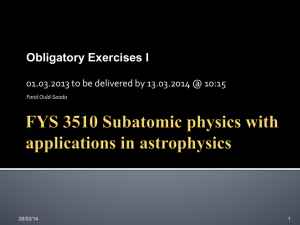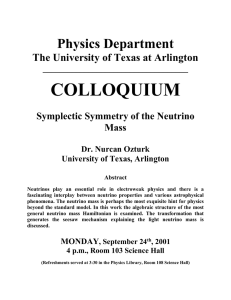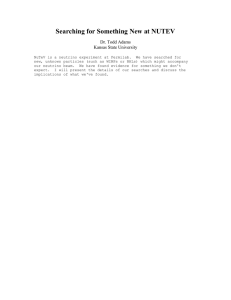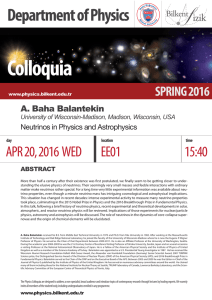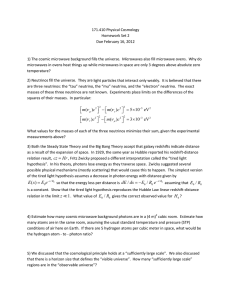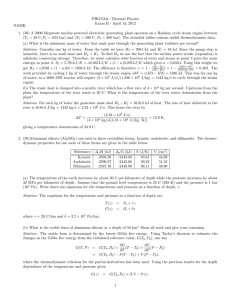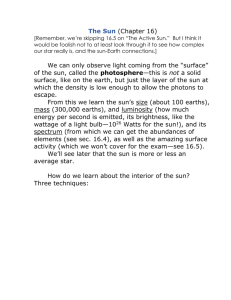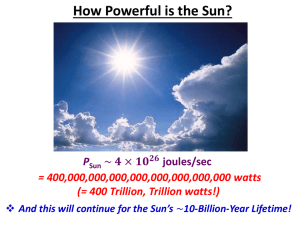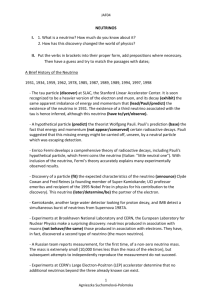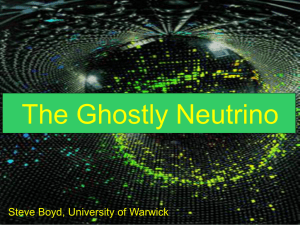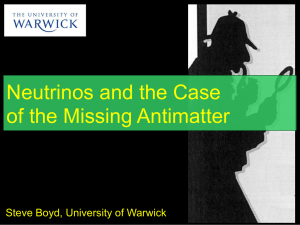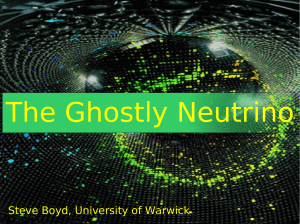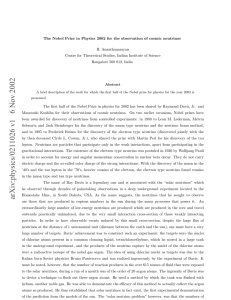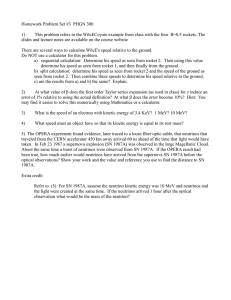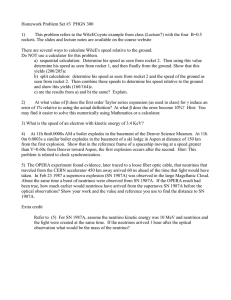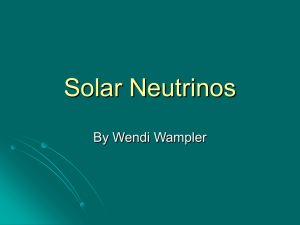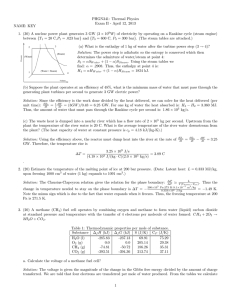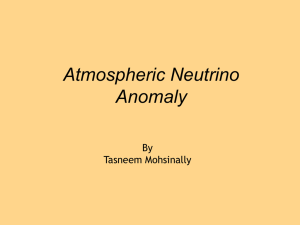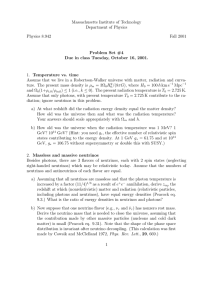Document 11541200
advertisement
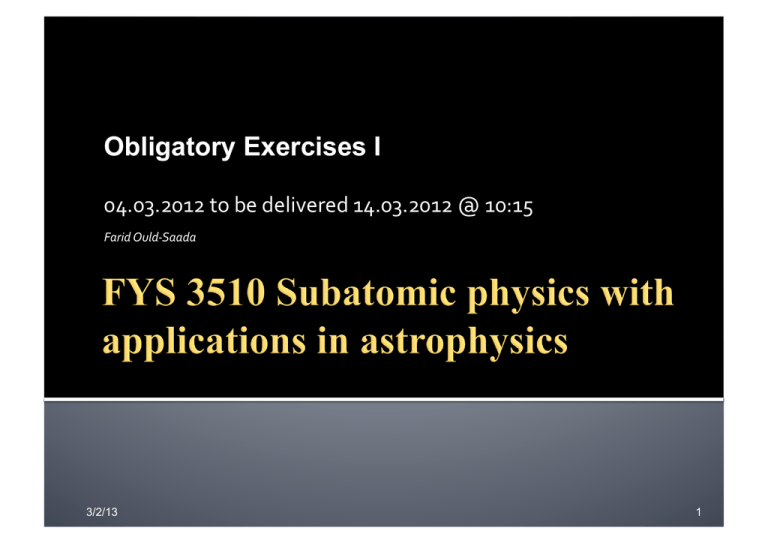
Obligatory Exercises I 04.03.2012 to be delivered 14.03.2012 @ 10:15 Farid Ould-­‐Saada 3/2/13 1 1. 2. 3. In the LHC at CERN, 2 proton beams will collide head-­‐on with energies Ep=7TeV. a) What is the centre of mass (CM) energy? b) What energy would be needed to produce the same CM energy with a proton beam on a fixed hydrogen target? c) How does this energy compare with cosmic ray energies? A π0 meson with momentum 135 GeV/c decays into 2 photons. a) If its mean life is 8.5 10-­‐17 s, calculate to 10% accuracy how far the high-­‐energy π0 will travel prior to decay. b) What will be the approximate minimum opening angle of its 2-­‐decay photons in the laboratory? Consider the collision of a photon with a target of mass M that is initially at rest in the laboratory. a) Show that a minimum laboratory energy that a photon must have to produce an e+e-­‐ pair is ⎛ me ⎞ 2 E γ = 2me c ⎜1+ ⎟ ⎝ M ⎠ 3/2/13 2 1. Rutherford scattering a) What is the minimum impact parameter needed to deflect 7.7 MeV α particles from gold nuclei by at least 1o? b) What about by at least 30o? c) What is the ratio of probabilities for deflection of θ>1o relative to θ>30o? 2. Evaluate the ratio between the cross-­‐sections of the following reactions at the same energy in terms of the isospin amplitudes M0, M1 and M2 : (1) K − p →π +Σ − 3. (2) K − p → π 0Σ 0 (3) K − p → π −Σ + Charge conjuga/on a) What are the charge conjugate reac/ons to reac/ons (1) and (2) below? € b) Can a system be an eigenstate of the charge conjuga/on operator? (1) K − + p →K 0 + n ; 3/2/13 (2) p + p → π + + π − 3 1. Which of the following reactions are allowed and which are forbidden? -­‐ If allowed, draw the Feynman graph and state which interac/on is at work. -­‐ If forbidden, give the reasons. € 3/2/13 1. K − + p →K + + Ξ − 2. π 0 → γ + γ + γ 3. ρ 0 → γ + γ 4. Ω− →Ξ 0 + π − 5. n → p + π − 6. e + + e − → γ + γ + γ 7. e + + e − →ν e + ν e 8. Λ0 → p + e − + ν e 9. ν µ + n → µ − + p 10. e + + n → p + ν e 11. µ + →e + + ν e + ν µ + e + + e − 12. p →n + e + + ν e 13. ν e + e − →ν e + e − 15. ν e + ν e →ν e + ν e 14. e + + e − →W + + W − 4 1. Solar neutrinos a) How are solar neutrinos produced and detected? b) What is the solar neutrino problem and how is it solved? 2. Atmospheric neutrinos a) How are atmospheric neutrinos produced and detected? b) What is the atmospheric neutrino anomaly and how is it explained? 3. Oscilla/on probability a) Derive the probability for an electron neutrino to oscillate into a muon neutrino? b) What about an an/-­‐muon-­‐neutrino to oscillate into an an/-­‐electron-­‐neutrino? 3/2/13 5

